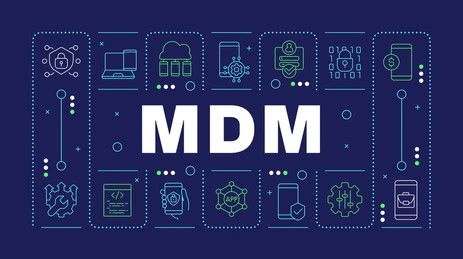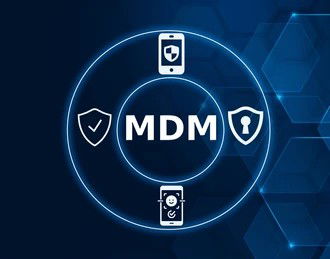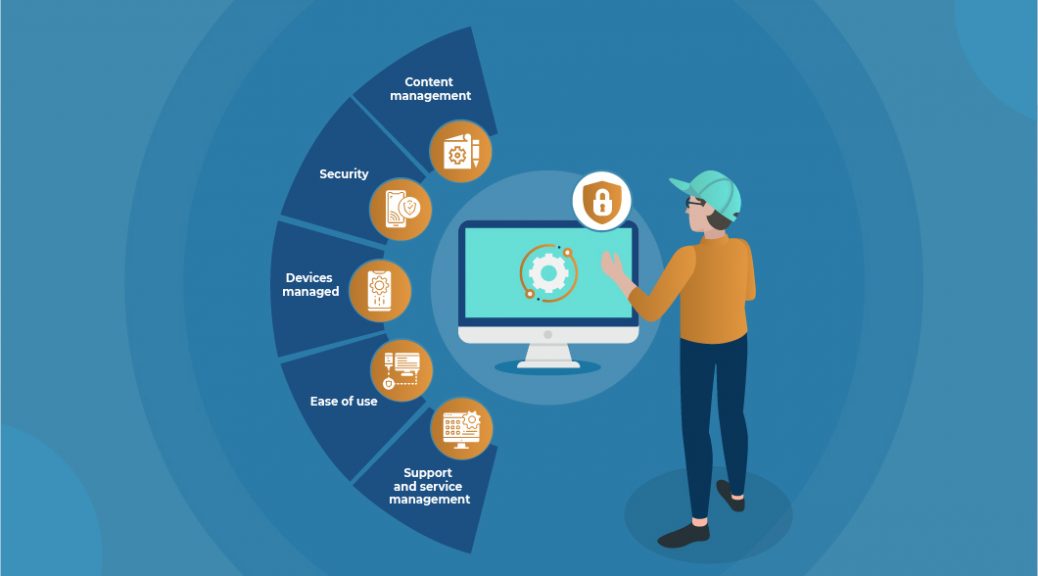Mobile Device Management (MDM) Solution - FGRADE
MDM tools help organizations monitor, update, and protect devices with ease. Explore our MDM guide and experience FGRADE’s platform today.
What is Mobile Device Management (MDM)?
Mobile Device Management is a comprehensive software-based approach that organizations use to monitor, secure, and manage employee mobile endpoints such as smartphones, tablets, and increasingly, laptops. MDM forms a crucial part of an organization’s overall cybersecurity and IT strategy. It’s primary function is to enforce corporate policies and configurations across all enrolled devices, regardless of their location or ownership.
MDM solutions operate from a centralized console, giving IT administrators the ability to manage the entire device lifecycle, from initial onboarding to eventual retirement. This includes managing both company-owned devices and personal devices used for work. By providing capabilities like mandatory security settings, remote provisioning of applications, and instant data security controls, MDM ensures that a highly mobile workforce remains productive without compromising sensitive corporate data. It is the essential framework for maintaining security, compliance, and operational efficiency in the age of mobility.
How does Mobile Device Management (MDM) Work?
Mobile Device Management works by establishing a secure, managed connection between a central MDM server (or cloud service) and the mobile devices themselves. The core mechanism involves installing a small client application or enrollment profile on each endpoint.
Once enrolled, the device becomes a "managed endpoint," allowing the IT administrator to remotely push policies, settings, and applications to it. The communication often leverages native device platform services (like Apple Push Notification Service or Google's Firebase Cloud Messaging) to send commands efficiently. This allows the IT team to execute various security and management functions, such as:
Configuration Management: Remotely configuring Wi-Fi, VPN, and email settings.
Security Enforcement: Mandating device-level encryption, complex passcode policies, and screen-lock timers.
Application Management: Whitelisting (approving) and Blacklisting (blocking) specific applications, and remotely installing or updating work apps.
Inventory Tracking: Maintaining a real-time inventory of all devices, including their hardware details, operating system versions, and security status.
This continuous two-way communication enables the organization to maintain a secure and compliant digital environment, regardless of where the device is located.


How can MDM help prevent data breaches on mobile devices?
MDM is a frontline defense against data breaches primarily by enforcing security-centric policies and providing critical response capabilities. It ensures a foundational level of security on every device by mandating controls like full-device encryption, which makes data unreadable to unauthorized parties if the device is lost or stolen.
Key anti-breach measures include:
Enforcing Strong Authentication: MDM requires strong, complex passcodes and can integrate with multi-factor authentication (MFA) systems, making unauthorized access extremely difficult.
Containerization and Separation: For BYOD devices, MDM creates a secure container or work profile that logically separates corporate data and applications from the employee's personal files. This prevents unauthorized sharing (e.g., copy-pasting work data into a personal app) and allows for a selective wipe of only the corporate data, protecting the employee's privacy.
Remote Response: The single most powerful breach prevention tool is the ability to remotely lock or wipe a device immediately upon reporting it lost or stolen, ensuring sensitive information is removed before it can be accessed by a thief.
How To Choose the Best MDM Solution for your Business?
Choosing the right MDM solution comes down to your organization’s needs, device ecosystem, and compliance requirements.
Platform support: Make sure it works with all OS and device types, including any specialized hardware.
Security: Look for strong features like containerization for BYOD, granular policies, and fast remote lock/wipe.
Ease & scale: The console should be simple to use, support bulk policy deployment, and scale easily as you grow.
Integration: It should plug smoothly into your existing IT stack (Identity Providers, AD, help desk, etc.).
Compliance: If you’re in a regulated industry, it must provide detailed logs and reports to meet standards like HIPAA or GDPR.

Understanding Mobile Device Management
Benefits of Mobile Device Management
Enhance Data Security: Enforces encryption, strong passcodes, and containerization to protect sensitive corporate data. Streamlined IT administration: Automates device setup, configuration, and app development, significantly reducing IT workload Regulatory compliance: Helps meet standards like HIPAA or GDPR by providing audit logs and enforcing required security measures Remote Data Protection: Allows IT to remotely lock a lost device or perform a full or selective wipe of corporate data if it is stolen. Support for BYOD: Enables employees to use their personal devices for work by creating secure work profiles that separate corporate and personal data.
Measures that MDM takes to protect against malicious apps
MDM protects devices from malicious apps through strict control and monitoring.
• App control: Whitelisting allows only approved apps; blacklisting blocks risky or malicious ones.
• Managed distribution: IT can push, update, or remove apps remotely, ensuring only secure, vetted versions are used.
• Compliance checks: If a device is jailbroken or rooted, MDM detects it and can block access until the issue is fixed.
Conclusion
In today’s mobile-first world, your business is conducted everywhere. Mobile Device Management services are no longer optional, they are the critical security layer that ensures productivity meets robust protection. MDM tools help organizations monitor, update, and protect devices with ease.
FAQs
What is MDM in Device Management?
MDM stands for Mobile Device Management. It is a software system used by IT departments to secure, monitor, and manage smartphones, tablets, and other endpoints across an organization from a single, centralized console.
Is the MDM app safe?
Yes, the MDM client application (or profile) is safe and a core component of your organization's security strategy. It is designed to allow the IT team to enforce security policies and manage corporate data only; on BYOD devices, a well-configured MDM (or EMM/UEM) solution uses features like containerization to strictly separate and protect your personal data from corporate management.
How do I turn off mobile device management?
The process for turning off or removing MDM is called unenrolling or unbinding the device. This is typically done by the user in the device's settings menu (e.g., removing a profile on iOS or uninstalling the work profile on Android), but it requires a password or authorization from the corporate IT department. Once removed, all corporate data and applications on the device are typically wiped clean for security.
Is MDM only for mobile?
Historically, MDM was strictly for mobile devices (smartphones and tablets). However, the technology has evolved into Enterprise Mobility Management (EMM) and, most recently, Unified Endpoint Management (UEM), which now manages a broader range of endpoints, including laptops, desktops, wearables, and IoT devices, from a single platform.
How to remove hidden devices from device Manager?
This question typically refers to the Windows Device Manager. In Windows, you can show non-present (hidden) devices by opening an elevated command prompt and running set devmgr_show_nonpresent_devices=1 before opening Device Manager. However, if this refers to a corporate MDM system, removing a "hidden" (unregistered or unapproved) device from the network is accomplished via the MDM console's policy enforcement and inventory tools, not the local device's settings.
What is Unified Endpoint Management (UEM)?
Unified Endpoint Management (UEM) is the evolution of MDM and EMM. It is a single platform that centrally manages, secures, and supports all user endpoints, including smartphones, tablets, laptops (Windows, macOS), and IoT devices, thereby providing a comprehensive, unified view and control of the entire corporate digital landscape.
What Are Mobile Endpoints?
Mobile Endpoints are any computing devices that can connect to a corporate network or access corporate data while being physically portable. This primarily includes smartphones and tablets, but can also refer to laptops, ruggedized field devices, and certain wearables that function outside the traditional office perimeter.

Search, compare & buy top business software with FGRADE. Find the best deals on Microsoft 365, Zoho, Google Workspace & more. Shop smart & save big!
Office Address
AWFIS, Ground Floor, DSL abacus it park, Survey Colony, Industrial Development Area, Uppal, Hyderabad, Telangana 500039
©2025 FGrade, All rights reserved.
